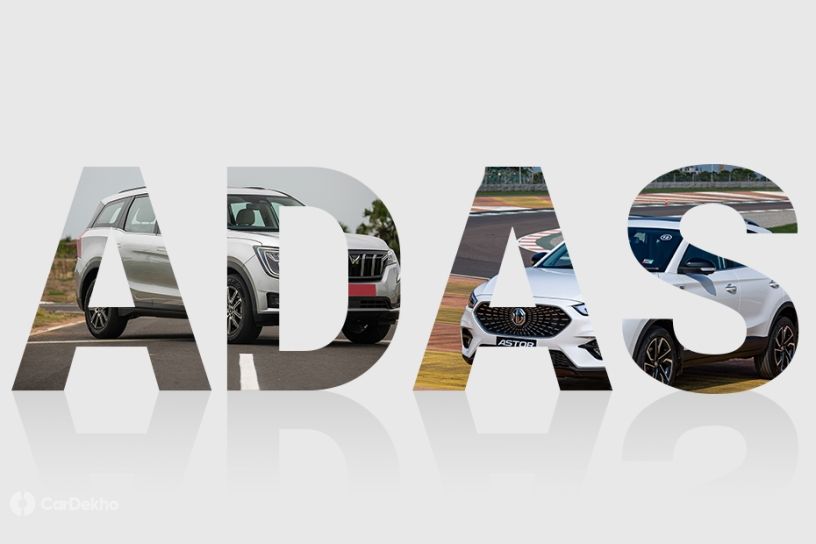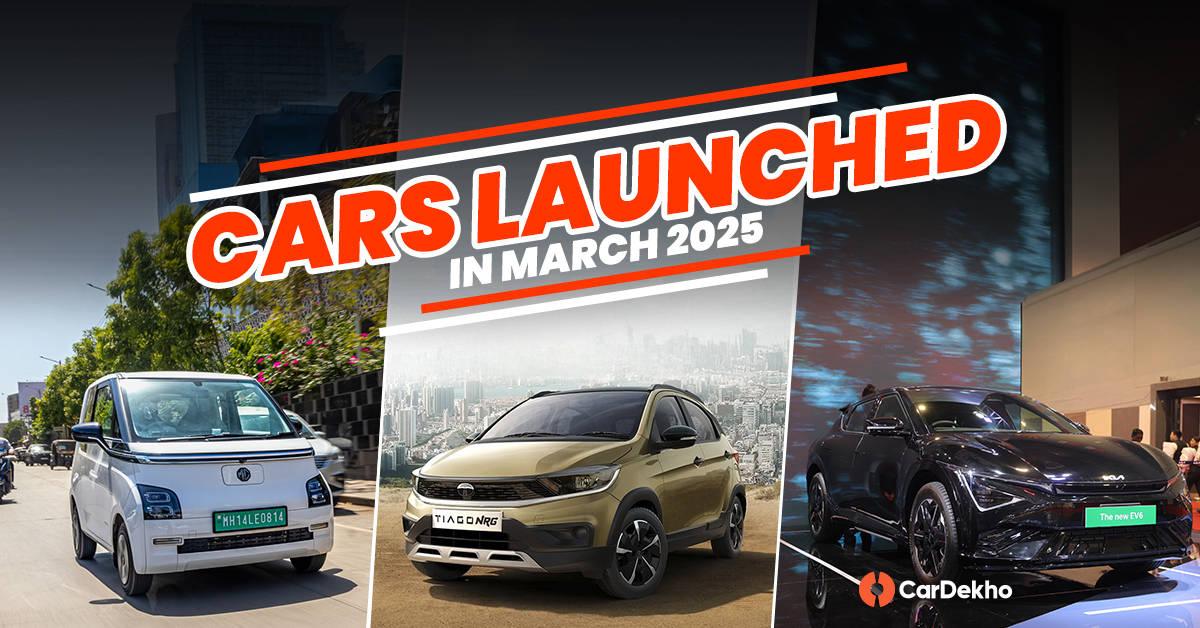Mahindra XUV700, MG Astor Are Democratising ADAS!
Published On Oct 02, 2021 08:00 AM By Dhruv
- Write a comment
Both XUV700 and Astor compromise on some feel-good features to offer ADAS in the Rs 10 lakh-20 lakh segment

The Mahindra XUV700 and upcoming MG Astor belong to the Rs 10 - Rs 20 lakh segment, and they both offer ADAS (Advanced Driver Assistance Systems). This is a huge deal as the two offerings skimp on a few feel-good features to provide autonomous driver assists and beefed-up safety.

However, before the XUV700 and Astor decided to offer ADAS, the least expensive model to do so was the MG Gloster. But its price is almost double the expected prices of the other two. Both Mahindra and MG have, therefore, taken giant strides in offering ADAS in a price-conscious segment, and until the tech becomes more mainstream, the XUV700 and Astor will be the only two options in their segment with the aforesaid safety feature.

What is ADAS?
ADAS is a suite of autonomous features that ramp up active safety in a vehicle. Active safety features work in real-time to prevent a crash, unlike airbags which are passive safety features to keep you safe during a collision. To sum it up, ADAS follows the mantra ‘prevention is better than cure’.
For ADAS to work, it requires a bunch of cameras or sensors that scan the immediate surroundings of a vehicle. Once this data is fed into the system, vehicles can use it to have some autonomous capabilities on the road. The level of autonomy depends on the level of hardware and software incorporated (and all in all how advanced the ADAS package is).
Features of ADAS
The ADAS system offers multiple features for enhanced safety and even convenience in some cases. Take a look at the features of ADAS in detail:
-
FCW/AEB: Front Collision Warning (FCW) and Auto Emergency Braking (AEB) use data from the front sensors or cameras to detect vehicles coming to a stop in front or pedestrians who might step in the way. The FCW system prompts the driver to apply the brakes to avoid a collision, and if the driver fails to react within a certain time, the AEB system automatically engages the brakes. At slower speeds, this system can potentially avoid a collision, whereas at higher speeds, it can significantly lessen the severity of a collision.
-
LKA: Lane Keep Assist (LKA) keeps a vehicle centred in its lane. This system uses lane markings to work and can also detect cars on the side of a vehicle. Like AEB, LKA initially prompts, and if the driver doesn’t take corrective action, it then gives gentle steering inputs to keep the vehicle in its lane.
-
BDS: Blindspot Detection System (BDS) is another great system that helps the most when cruising on a highway. It uses sensors or cameras at the side and rear of a vehicle and uses them to detect cars that might be in the blind spot of your mirrors. The system displays a warning on your ORVMs, or on the driver instrument cluster. The system can also physically intervene by gently nudging the steering to stop a lane change.
 Blindspot Detection Warning on the Astor
Blindspot Detection Warning on the Astor
-
ACC: Adaptive Cruise Control (ACC) is a convenience feature of ADAS. It works like regular cruise control, but also allows you to control the distance from the car in front. This means you can set it to work at a certain speed and also maintain a certain distance from the vehicle in front of you. Once the system detects a decrease in this distance, it will automatically slow down the car to maintain an adequate gap. Once the car in front speeds up, it will automatically speed up to the preset speed. The ACC system can bring a vehicle to a complete halt, and it can then again start moving the car once the vehicle in front starts moving.
 Adaptive Cruise Control System on XUV700
Adaptive Cruise Control System on XUV700
-
Rear Cross-Traffic Alert: This is another excellent ADAS system that helps at crawling speeds when you are reversing from a parking spot. The side sensors or cameras can detect vehicles approaching from either side, warn the driver, and even take corrective actions by applying the brakes.
-
Auto High Beam Assist: This is a feel-good feature that will automatically make nighttime driving safer. This feature can control the high beam of your vehicle and automatically switch to low beam when it senses an oncoming car. It then switches back to high beam once the vehicle has gone past.
-
Traffic Sign Recognition: This is a slightly advanced feature and is available in premium cars. The cameras on the vehicle can recognise signboards and take corrective action. For example, if a camera recognises a speed limit sign, ACC can automatically lower the speed of a car so that you stay under the speed limit.
What’s the catch?
ADAS is expensive, especially now when the economies of scale haven’t yet caught up. So how can the MG Astor and Mahindra XUV700 offer this feature when other cars in a similar price bracket aren’t able to do so?
 Astor's cabin
Astor's cabin
The MG Astor has taken a straight-up sacrificial approach. You don’t get ventilated seats, head-up display, wireless charging, or even ambient lighting -- big misses considering the segment. But it’s not all bad. From initial impressions, the panoramic sunroof looks like it is the best in the segment, and the Astor also gets an AI (Artificial Intelligence) assistant, which can control some of your car’s features, give you weather updates, and even tell you a joke.
 XUV700's cabin
XUV700's cabin
The Mahindra XUV700 has taken a slightly different approach. While it has chosen to offer most features, the really cool features are available as optional packs. Case in point, the 12-speaker Sony sound system. It sounds awesome, but it is only available as an extra. This way, the choice is on you, and those who don’t want to pay extra, don’t have to. Features like ventilated seats and auto-dimming IRVM are also missing.
 XUV700 misses out on an auto IRVM
XUV700 misses out on an auto IRVM
Both cars are giving up on a few premium features to accommodate ADAS, but the point to note here is that the missing features don’t carry the weight to impact your buying decision. Yes, you would appreciate these features if you had them, but not having them won’t make you miss them.
Why are Mahindra and MG doing this?
Feel-good features sell like hot cakes in the Rs 10 - Rs 20 lakh segment. Then why have Mahindra and MG decided to give some of them a miss? That too, for ADAS, which is still unproven in India? After all, we know that autonomous cars and Indian roads aren't considered the best of combinations.

The simple answer is: prioritising safety. The two carmakers are offering new buyers, who’d rather have safety beefed up than having creature comforts, the choice to be able to do so. This will set the ball rolling, and other carmakers will soon have to offer ADAS in the segment. Maybe in a few years, cars under Rs 10 lakh might be offering ADAS!
The XUV700 and Astor will also prove exactly how successful this tech is in the country. The debate that Indian roads and ADAS don’t mix well will soon have new arguments, and this will either shatter this notion or at least tell us how we need to improve for these features to work better here in the country.

We expect more and more cars to start offering ADAS in the future, but in the meantime, the XUV700 and Astor will always be remembered as cars that did it first!
Read More on : XUV700 on road price
3 out of 3 found this helpful















